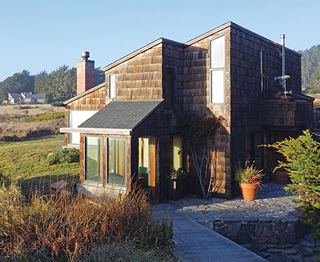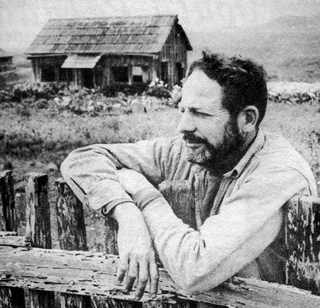Soul-searching by the Sea - Page 2
 |
|
|
 |
|
|
 |
|
|
 |
|
|
And, perhaps the most basic question, was Sea Ranch ever, really, a truly environmentally friendly project? Should anything at all have been built on this wild stretch of coast?
In the histories told about Sea Ranch, the 1970s represented a major break. Larry Halprin stopped working for Oceanic Properties in 1969.
"Larry was out of the scene then, and the corporation essentially took over," Whitaker said, "and they developed more or less the rest of the property following Larry's plan and ideas, but it wasn't Larry." Densities of homes increased and homes encroached both into the meadows and onto the bluffs.
And it wasn't just Halprin's departure that changed the look of Sea Ranch. Unlike the older, southern portion, where houses had to set aside broad areas for septic tanks, the northern portion of Sea Ranch had sewers, "which means you can have bigger houses on smaller lots, which seems to not be the right way to go," Whitaker said.
But before blaming Sea Ranch's environmental sins on the faults of Oceanic, state regulators, or rich people, it must be remembered that Sea Ranch's original plan had problems of its own, calling, as it did, for about 5,200 homes, with a projected population of 15,000 people, a small city.
(Today, according to the U.S. census, the population is 1,305—though, with part-timers blending with full-timers and with vacation renters, the real population number is amorphous. At final build-out, there will be about 2,285 homes.)
Could Sea Ranch have succeeded as a Utopian rural community with a density more than double what is expected today when it is complete? Whitaker doubts it, and suggests the developer never actually expected to build that many homes.
"I think they plunked that [number] down as an open-ended number, because they didn't know how many homes they were going to get in there," Whitaker said in an interview.
The plan to build houses along an absolutely unspoiled, ten-mile stretch of coast that had been home to sheep aroused conservationists' ire from the start.
It rubbed salt in the wound that the state of California, "with near-sightedness typical of our political natives," had recently declined to buy the 5,200 acres for a park, staff writer Art Seidenbaum observed in the Los Angeles Times in 1968. Had that occurred, the public could have been enjoying land that was now slated for vacation homeowners.
Al Boeke, the Los Angeles architect and advocate of the 'new towns' movement who conceived the idea for Sea Ranch, discovered the site, and brought in Castle & Cooke, picked up the land for $500 an acre, Seidenbaum reported.
By the mid-1960s, the first homes were being built, ensconced in hedgerows of Monterey cypresses planted originally as windbreaks for the sheep, or built low into the land, taking sun and strong winds into account, and were already winning architectural awards.
Sea Ranch homes can look like barns. You can see silos in the towers of many of the homes, and some suggest church steeples. The home Donlyn Lyndon built for himself and his wife, artist Alice Wingwall, suggests from a distance Fort Apache. Other homes resemble Cape Cod saltboxes.
Pleasing too is the way the better homes blend historical and abstract forms, often with splayed plans or with colliding forms, or with the house broken into several smaller volumes, in part to reduce its visual impact.




